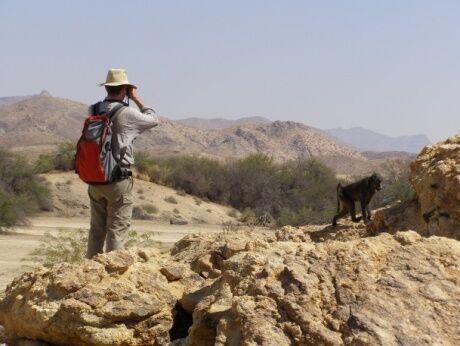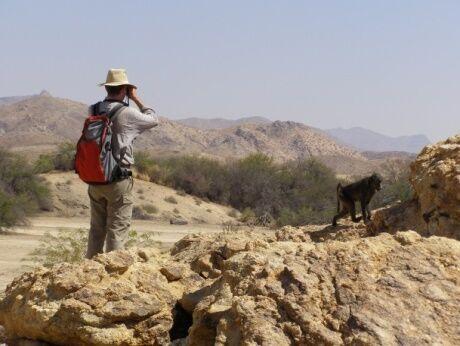
Credit: Dr Andrew King/Swansea University
An international team of scientists led by Swansea University biologists describe how novel technologies are transforming our understanding of why wild animals form different groups.
Combining animal tracking data with environmental data from satellites or drones means that scientists can begin to study whole groups and their interactions in the real, changing environments in which they live and have evolved.
Researchers now have access to gadgets such as bio-loggers, which are electronic tracking devices that attach to animals, recording GPS position and animal motion.
For example, swarms, shoals, flocks, herds and troops are just some of the types of groups wild animals form, but biologists in the latest edition of the journal Trends in Ecology & Evolution now believe this aforementioned new technology has resulted in a study of 'unprecedented detail'.
Getting data on the behaviour of all individuals within a group, at the same time for example, means the scientists have a complete overview of interactions.
Until now, this sort of data has only really been possible in the laboratory, where scientists tend to get data on the motion of individuals in fish shoals or insect colonies from video recordings.
Dr Andrew King, lead author and Associate Professor at Swansea University, commented: "Over the past decade we have learnt an extraordinary amount about collective behaviour of animals from work undertaken in the lab.
"But the environment in the lab is a lot simpler than the wild, and the compositions of the groups studied tend to be determined by the scientists."
Dr Ines Fürtbauer, co-author and senior lecturer at Swansea University, said: "Studying social behaviour in the wild is hard. When observing monkeys I have to focus my attention on one or two individuals at a time.
"Bio-loggers – which are electronic devices that can be attached to an animal, for example on a collar, are changing things – they can provide data on the behaviour of many individuals simultaneously."
Dr Gaëlle Fehlmann, co-author based at the Max Planck Institute of Ornithology in Germany, said: "These new data are allowing us to study social behaviours in unprecedented detail.
"Where wild animal groups are in conflict with people, for example, it means we can better predict how they may cope with any management imposed by people."
###
Media Contact
Ben Donovan
[email protected]
01-792-602-382
@swanseauni
http://www.swansea.ac.uk/
Related Journal Article
http://dx.doi.org/10.1016/j.tree.2018.03.004





